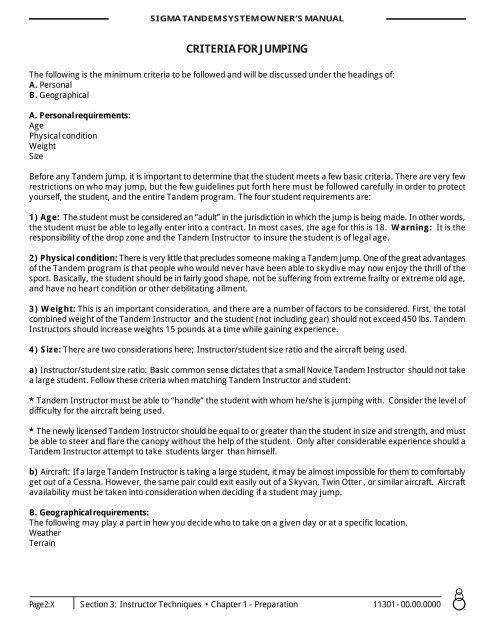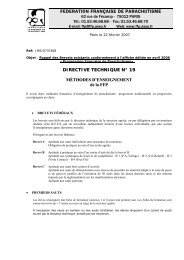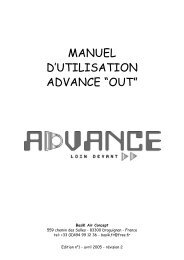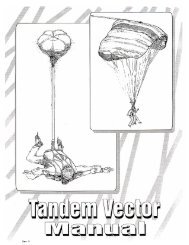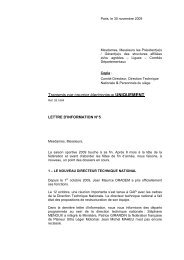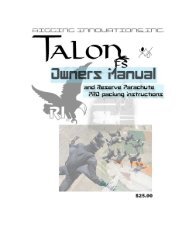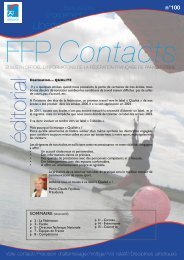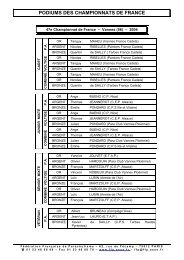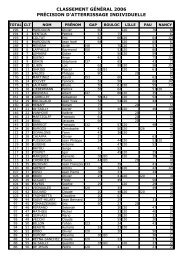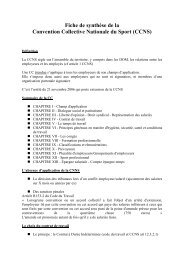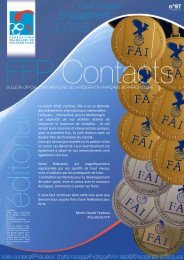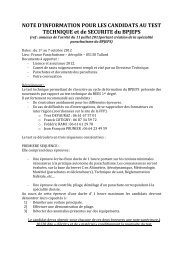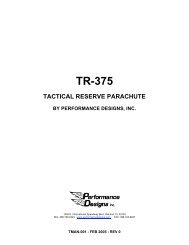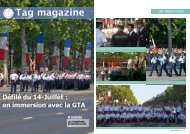tandem vector owner's manual
tandem vector owner's manual
tandem vector owner's manual
Create successful ePaper yourself
Turn your PDF publications into a flip-book with our unique Google optimized e-Paper software.
SIGMA TANDEM SYSTEM OWNER’S MANUAL<br />
CRITERIA FOR JUMPING<br />
The following is the minimum criteria to be followed and will be discussed under the headings of:<br />
A. Personal<br />
B. Geographical<br />
A. Personal requirements:<br />
Age<br />
Physical condition<br />
Weight<br />
Size<br />
Before any Tandem jump, it is important to determine that the student meets a few basic criteria. There are very few<br />
restrictions on who may jump, but the few guidelines put forth here must be followed carefully in order to protect<br />
yourself, the student, and the entire Tandem program. The four student requirements are:<br />
1) Age: The student must be considered an “adult” in the jurisdiction in which the jump is being made. In other words,<br />
the student must be able to legally enter into a contract. In most cases, the age for this is 18. Warning: It is the<br />
responsibility of the drop zone and the Tandem Instructor to insure the student is of legal age.<br />
2) Physical condition: There is very little that precludes someone making a Tandem jump. One of the great advantages<br />
of the Tandem program is that people who would never have been able to skydive may now enjoy the thrill of the<br />
sport. Basically, the student should be in fairly good shape, not be suffering from extreme frailty or extreme old age,<br />
and have no heart condition or other debilitating ailment.<br />
3) Weight: This is an important consideration, and there are a number of factors to be considered. First, the total<br />
combined weight of the Tandem Instructor and the student (not including gear) should not exceed 450 lbs. Tandem<br />
Instructors should increase weights 15 pounds at a time while gaining experience.<br />
4) Size: There are two considerations here; Instructor/student size ratio and the aircraft being used.<br />
a) Instructor/student size ratio: Basic common sense dictates that a small Novice Tandem Instructor should not take<br />
a large student. Follow these criteria when matching Tandem Instructor and student:<br />
* Tandem Instructor must be able to “handle” the student with whom he/she is jumping with. Consider the level of<br />
difficulty for the aircraft being used.<br />
* The newly licensed Tandem Instructor should be equal to or greater than the student in size and strength, and must<br />
be able to steer and flare the canopy without the help of the student. Only after considerable experience should a<br />
Tandem Instructor attempt to take students larger than himself.<br />
b) Aircraft: If a large Tandem Instructor is taking a large student, it may be almost impossible for them to comfortably<br />
get out of a Cessna. However, the same pair could exit easily out of a Skyvan, Twin Otter , or similar aircraft. Aircraft<br />
availability must be taken into consideration when deciding if a student may jump.<br />
B. Geographical requirements:<br />
The following may play a part in how you decide who to take on a given day or at a specific location.<br />
Weather<br />
Terrain<br />
Page 2:X Section 3: Instructor Techniques • Chapter 1 - Preparation 11301 - 00.00.0000


